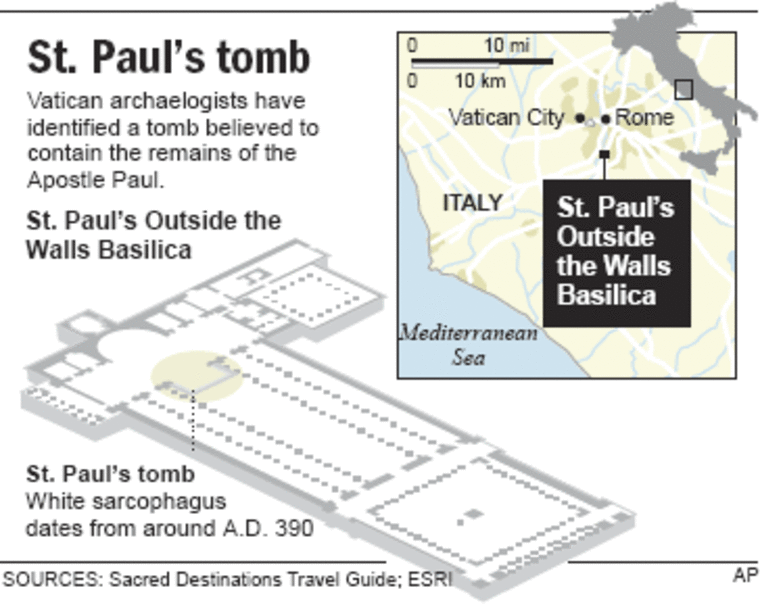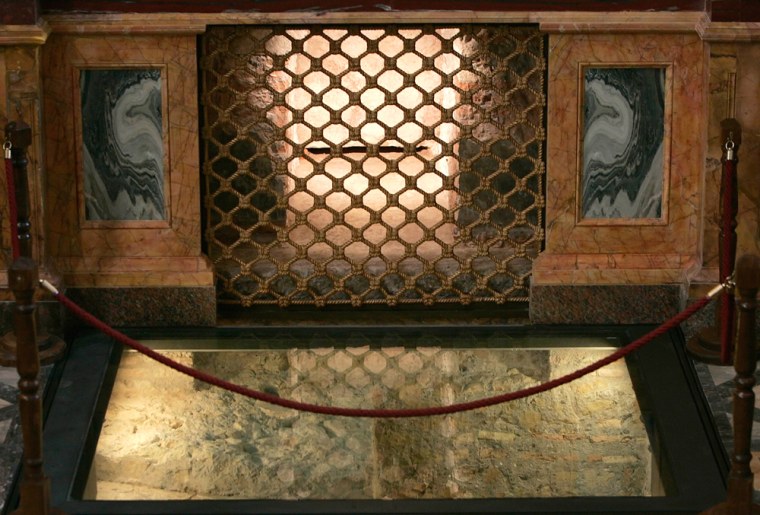The Vatican said on Monday it was studying the possibility of opening a thick marble sarcophagus believed to contain the remains of the Apostle Paul to study its contents.
The prospect was raised at a news conference at which Vatican officials unveiled the results of an archaeological dig which has made part of the sarcophagus in Rome’s Basilica of St Paul’s Outside the Walls visible to pilgrims.
“We tried to X-ray it to see what was inside, but the stone was too thick,” said Cardinal Andrea Cordero Lanza di Montezemolo, archpriest of the basilica on Rome’s outskirts.
“We will now take the necessary steps to seek the authorization to explore the inside. This is being studied,” he said, adding that Pope Benedict XVI would have to give eventual permission because the Vatican owns the basilica.
Montezemolo belittled some media reports that the apostle’s tomb had only now been discovered.

“There has been no doubt for the past 20 centuries that the tomb is there. It was variously visible and not visible in times past, and then it was covered up. We made an opening (in the basilica floor) to make it visible at least in part,” he said.
According to Catholic tradition, St. Paul was killed for his faith in the 1st century and buried on Rome’s Via Ostiense.
Tracing the remains
Born Saul in the city of Tarsus in present-day Turkey, he persecuted early Christians but converted when he had a blinding vision on the road to Damascus years after Christ’s death. Afterward, he became known as “Apostle to the Gentiles”.
A small church was built at a burial site near the Tiber River at the start of the 4th century, and a basilica was constructed at the end of the same century.
The basilica was changed over the centuries and nearly destroyed by a fire in 1823. With each change, enlargement or rebuilding, the sarcophagus became less accessible and ended up about 4 feet (1.3 meters) below the surface of the current floor.
Before the end of the recent excavations under the current basilica’s main altar, pilgrims could only stick their heads in a small opening and look down a vertical hole toward mortar that covered the tomb.
Years of work remain
Most of the sarcophagus, which is near a marble plaque reading “Paul Apostle Martyr,” is still covered by mortar, but part of one side of it has been exposed and is now visible through a new glass opening on the current floor.

Opening the sarcophagus, which measures about 8 feet by 4 feet and is about 3 feet high (2.55 by 1.25 by 1 meter), would take years of more archaeological work, since most of it is still embedded in the foundations of earlier churches.
The most recent dig to make the sarcophagus partly visible lasted four years and ended last September.
St. Paul’s is the second-largest of Rome’s basilicas, after St. Peter’s in the Vatican.
